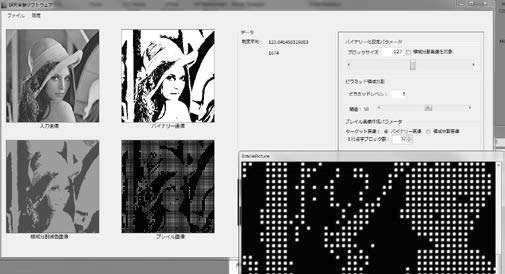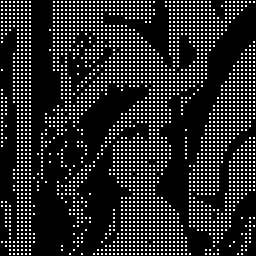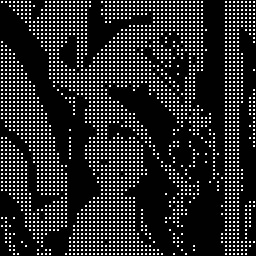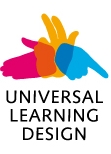1 Introduction
The role of human sight becomes increasingly important as information technology progresses. Presentations based on multimedia help to explain many kinds of situations. However, this form of communication, so convenient for persons gifted with sight, is inaccessible to the visually impaired. Thus, persons lacking eyesight are eager for a method that can provide them with access to progress in technology.
There has been a significant amount of research conducted over the years to devise alternative forms of communication for the visually impaired [1, 2]. For instance, several types of software that allow selected visual information to be converted into a text form and transmitted as synthesized speech or Braille already exists on the market. Efforts are also underway to improve the accessibility of GUI’s by combining auditory response with tactile display. The main issue here is that it is difficult to provide vision information that cannot be represented in word. In addition, most of tactile images do not provide vision information as well as sighted persons understand visual information from images.
On the other hand, Social linguistics has shown the importance of language register when answering a demanded task. A blind person may not understand fully what is being requested for he may not be sharing the same vocabularies, though he may know what that word means in the dictionary. The main issue here is that it is difficult to provide vision information to blind persons. Touch is known to be slower than vision for acquiring some information due to the fact that it obtains information sequentially [3]. However, some of the raised-line patterns used in haptic recognition tasks are made in rather large-scale drawings, which may cause a burden on memory. In fact, it is not known which size picture is better for tactile recognition, nor is it known what details should be included or excluded for better haptic recognition. These questions illustrate the need for a more complete study to learn whether blind people can really make sense of a two-dimensional picture. Focusing on the Braille system, it is a method that is widely used by people who are visually impaired to read and write, and was the first digital form of writing. The average braille reading speed is about 125 words per minute, but grater speeds of up to 200 words per minute are possible [4]. Thus, those who has enough braille literacy can easily detect braille patterns. We focus on between these features and character based image technique called ascii art for vision interaction with blind persons.
The aim of the present study is to develop a vision interaction software whereby a nature gray scale image is converted into braille based pattern based on several image processing methods so that blind persons can detect sevral localized segmentations where they have interests in the image.
2 Software design and discussion
There are many difficulties in converting vision information into braille pattern, because a digital image holds a substantial amount of information. Converting a digital image to braille pattern directly requires several ways to transform a digital image to binary image. In addition, this binary image is required to have vision information to share between the blind persons and sighted persons. To avoid these issues, our present study takes advantage of recent image processing algorithms. The main point is that the braille image should present visual information which is difficult to represent in word. Thus, we choose image segmentation algorithm based on recent image processing technologies. Fig. 1 shows the interface of our developed software which enables to convert the multi-grayscale image into the braille image. Fig. 2 shows braille pattern pictures. These braille patterns enable the blind persons to recognize correctly which points are different in the case of reversed image by touch. Our short paper will disclose both the detail image converting algorithm and vision interaction efforts with subjects of our proposed method.

[Fig. 1] The interface of vision interaction software.


[Fig. 2] Braille pattern picture without margin guide.
References
[1] Zheshen Wang, Baoxin Li. A Bayesian Approach to Automated Creation of Tactile Facial Images. Multimedia, IEEE Transactions on. June 2010. vol.12, no. 4. p. 233–246.
[2] Bing Fang, Oliveira, F., Quek, F. Using vision based tracking to support real-time graphical instruction for students who have visual impairments. Computer Vision and Pattern Recognition Workshops (CVPRW), 2010 IEEE Computer Society Conference on. 13–18 June 2010. p. 9–14.
[3] Jack M. Loomis, Roberta L Klatzky, Susan J. Lederman. Similarity of tactual and visual picture recognition with limited field of view. Perception. 1991. vol. 20. p. 167–177.
[4] American Council of the Blind: http://www.acb.org/.












